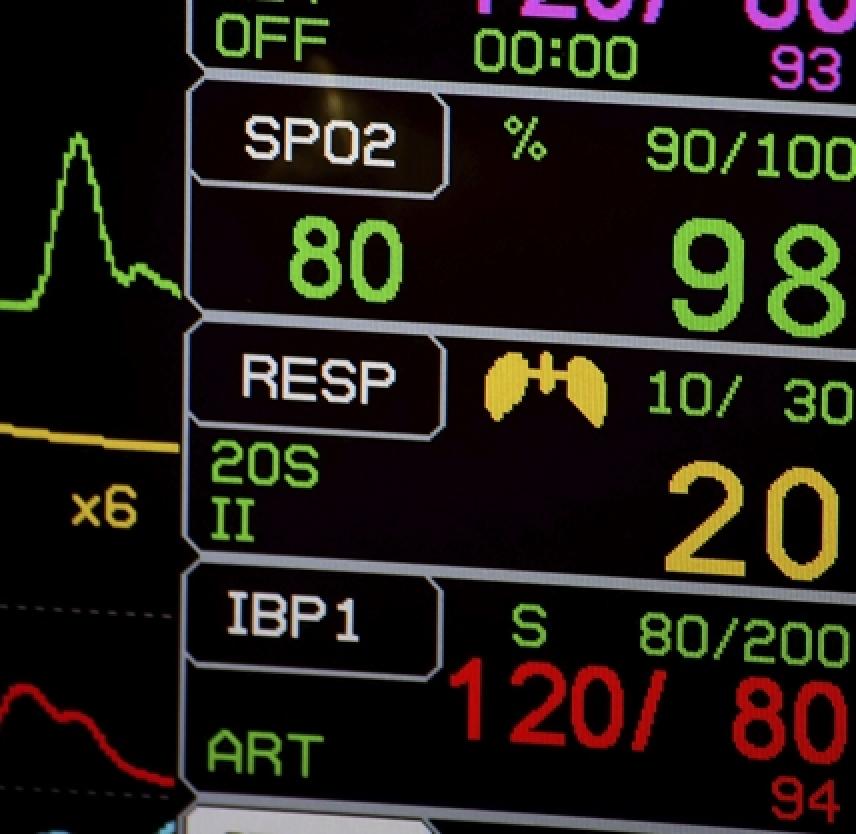
A TBI can cause problems with arousal, consciousness, awareness, alertness, and responsiveness. Generally, there are five abnormal states of consciousness that can result from a TBI: stupor, coma, persistent vegetative state, locked-in syndrome, and brain death.
Stupor is a state in which the patient is unresponsive but can be aroused briefly by a strong stimulus, such as sharp pain. Coma is a state in which the patient is totally unconscious, unresponsive, unaware, and unarousable. Patients in a coma do not respond to external stimuli, such as pain or light, and do not have sleep-wake cycles. Coma results from widespread and diffuse trauma to the brain, including the cerebral hemispheres of the upper brain and the lower brain or brainstem. Coma generally is of short duration, lasting a few days to a few weeks. After this time, some patients gradually come out of the coma, some progress to a vegetative state, and others die.
Learn more about coma on BrainLine's Disorders of Consciousness Hub.
Patients in a vegetative state are unconscious and unaware of their surroundings, but they continue to have a sleep-wake cycle and can have periods of alertness. Unlike coma, where the patients eyes are closed, patients in a vegetative state often open their eyes and may move, groan, or show reflex responses. A vegetative state can result from diffuse injury to the cerebral hemispheres of the brain without damage to the lower brain and brainstem. Anoxia, or lack of oxygen to the brain, which is a common complication of cardiac arrest, can also bring about a vegetative state.
Many patients emerge from a vegetative state within a few weeks, but those who do not recover within 30 days are said to be in a persistent vegetative state (PVS) . The chances of recovery depend on the extent of injury to the brain and the patient's age, with younger patients having a better chance of recovery than older patients. Generally adults have a 50 percent chance and children a 60 percent chance of recovering consciousness from a PVS within the first 6 months. After a year, the chances that a PVS patient will regain consciousness are very low and most patients who do recover consciousness experience significant disability. The longer a patient is in a PVS, the more severe the resulting disabilities will be. Rehabilitation can contribute to recovery, but many patients never progress to the point of being able to take care of themselves.
Locked-in syndrome is a condition in which a patient is aware and awake, but cannot move or communicate due to complete paralysis of the body.
Unlike PVS, in which the upper portions of the brain are damaged and the lower portions are spared, locked-in syndrome is caused by damage to specific portions of the lower brain and brainstem with no damage to the upper brain. Most locked-in syndrome patients can communicate through movements and blinking of their eyes, which are not affected by the paralysis. Some patients may have the ability to move certain facial muscles as well. The majority of locked-in syndrome patients do not regain motor control, but several devices are available to help patients communicate.
With the development over the last half-century of assistive devices that can artificially maintain blood flow and breathing, the term brain death has come into use. Brain death is the lack of measurable brain function due to diffuse damage to the cerebral hemispheres and the brainstem, with loss of any integrated activity among distinct areas of the brain. Brain death is irreversible. Removal of assistive devices will result in immediate cardiac arrest and cessation of breathing.
Advances in imaging and other technologies have led to devices that help differentiate among the variety of unconscious states. For example, an imaging test that shows activity in the brainstem but little or no activity in the upper brain would lead a physician to a diagnosis of vegetative state and exclude diagnoses of brain death and locked-in syndrome. On the other hand, an imaging test that shows activity in the upper brain with little activity in the brainstem would confirm a diagnosis of locked-in syndrome, while invalidating a diagnosis of brain death or vegetative state. The use of CT and MRI is standard in TBI treatment, but other imaging and diagnostic techniques that may be used to confirm a particular diagnosis include cerebral angiography, electroencephalography (EEG), transcranial Doppler ultrasound, and single photon emission computed tomography (SPECT).
-----------
NIH Publication No. 02-2478
Prepared by:
Office of Communications and Public Liaison
National Institute of Neurological Disorders and Stroke
National Institutes of Health
Bethesda, MD 20892
NINDS health-related material is provided for information purposes only and does not necessarily represent endorsement by or an official position of the National Institute of Neurological Disorders and Stroke or any other Federal agency. Advice on the treatment or care of an individual patient should be obtained through consultation with a physician who has examined that patient or is familiar with that patient's medical history.
All NINDS-prepared information is in the public domain and may be freely copied. Credit to the NINDS or the NIH is appreciated.
Source: Traumatic Brain Injury: Hope Through Research. National Institute of Neurological Disorders and Stroke. http://www.ninds.nih.gov

Comments (1)
Please remember, we are not able to give medical or legal advice. If you have medical concerns, please consult your doctor. All posted comments are the views and opinions of the poster only.
Anonymous replied on Permalink